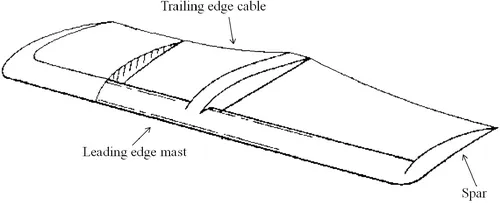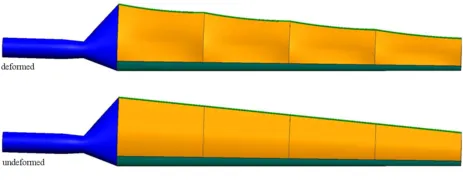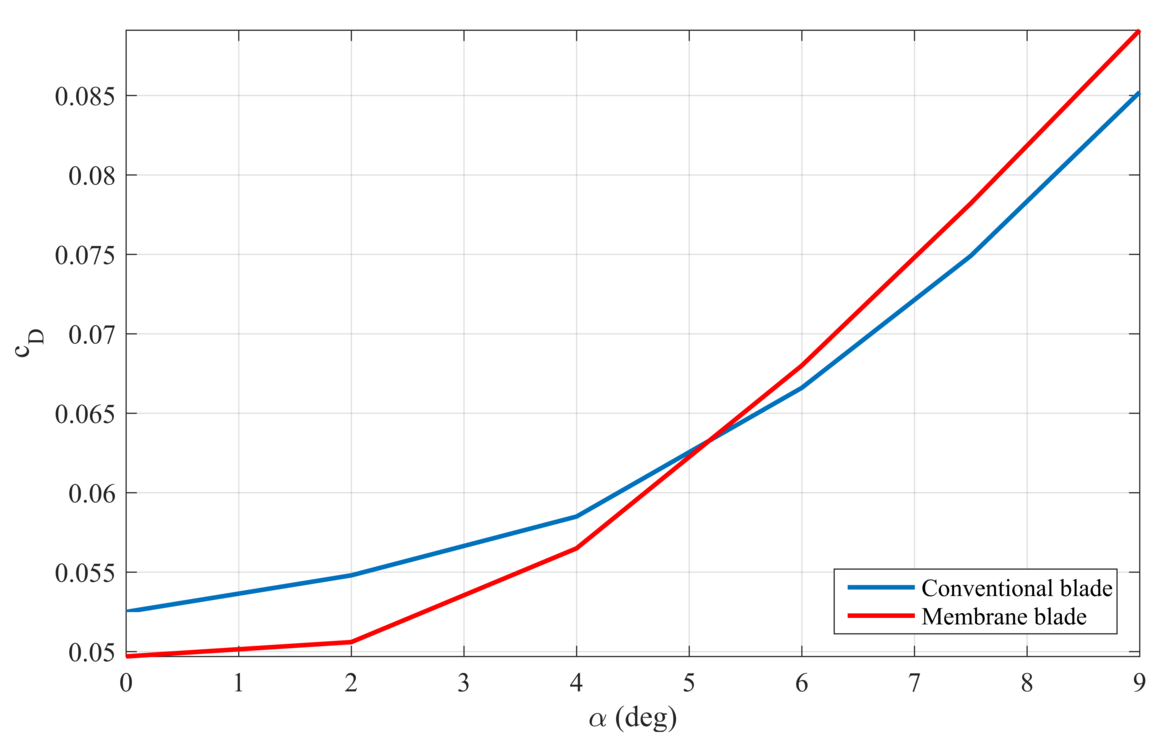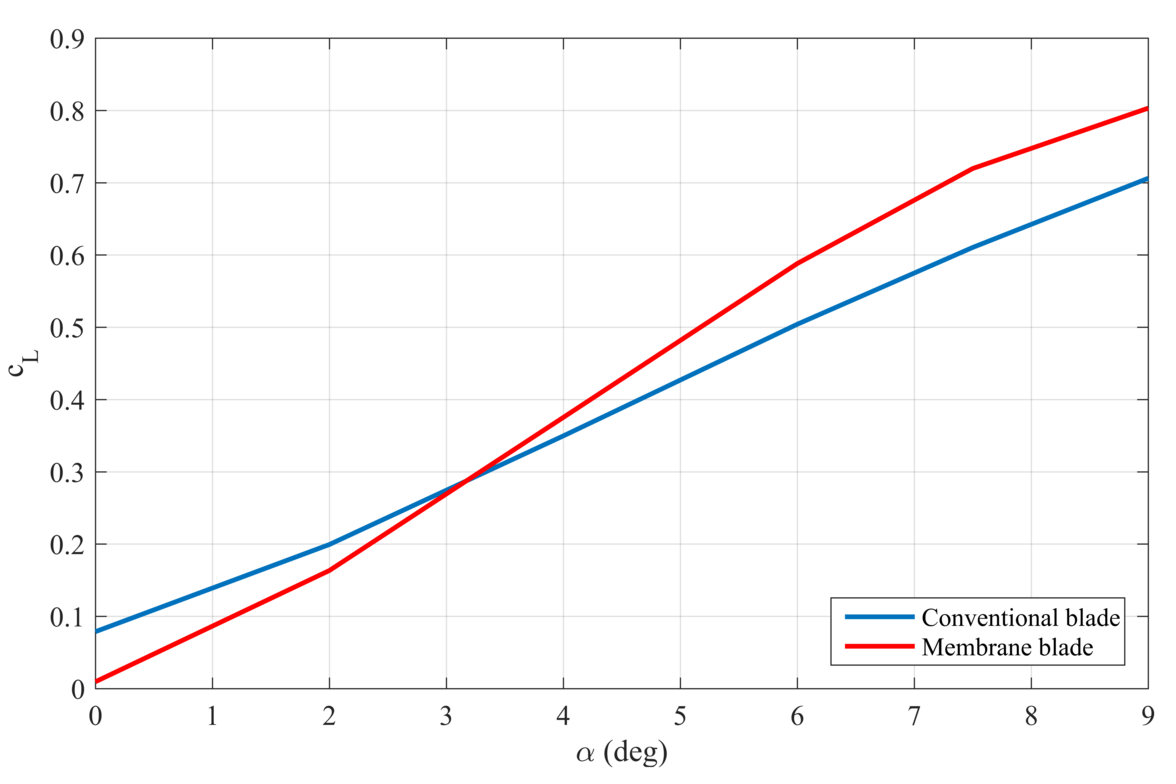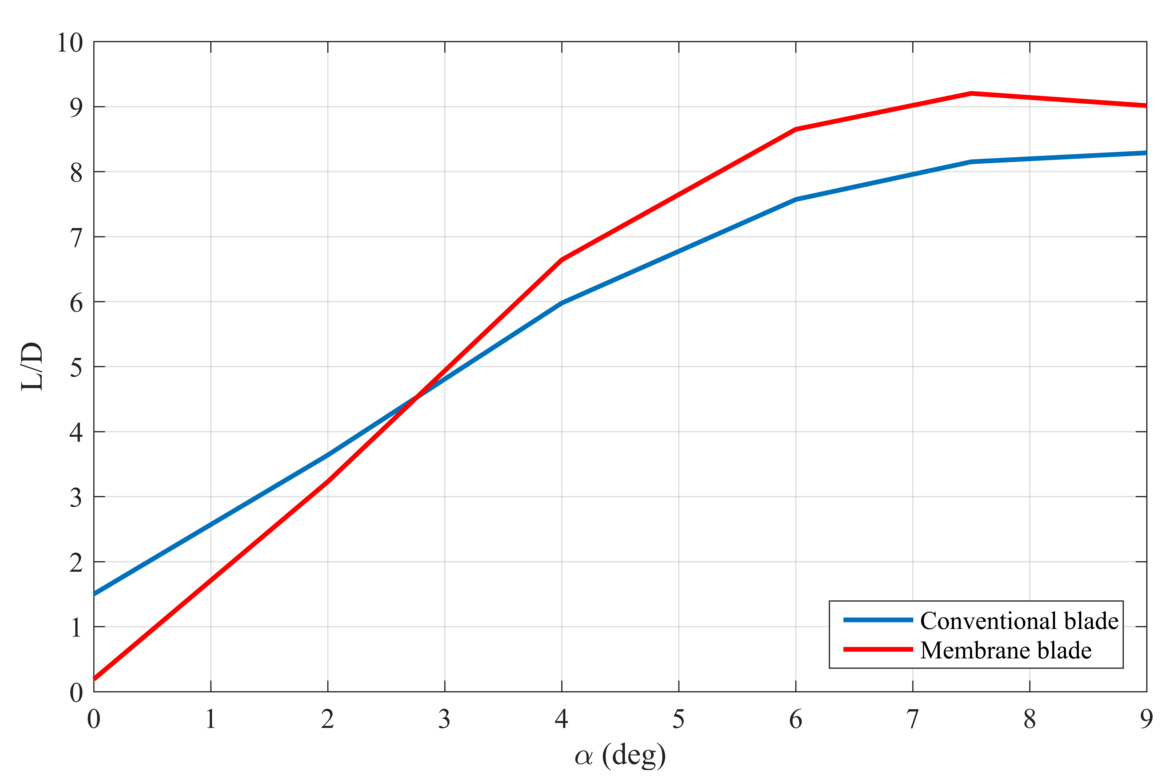Flexible wings have been the topic of many research programs. Different techniques have been used in order to bring flexibility to conventional wing configurations. They range from using new structural concepts for wing frame like telescopic spars or morphing wing to using smart materials in manufacturing of the wing.
The figure below shows the membrane wing concept studied in the current work. The sailwing concept was proposed by Ormiston during the 70s. A rigid mast forms the leading edge section of the wing. To support the upper and lower membranes, ribs are mounted along the span of the wing and their number depends on the span length of the wing. Upper and lower membranes are joined together at the trailing edge via a pretensioned edge cable.
The flexibility of a membrane wing enables it to adapt itself to the flow field to a certain extend. The advantages of this passive adaption to the surrounding flow are from aerodynamics point of view a higher lift slope, higher maximum lift coefficient and postponed stall to higher angles of attack compared to rigid wings and from the structural perspective load reduction in unsteady flow cases . One drawback of flexible wings could be that because of their flexibility and due to self excited vibrations they could show unsteady response even to steady flow conditions.
A schematic representation of the design work flow is presented in the figure below. The first step is formfinding analysis. First, the initial topology of the wing configuration should be defined and pre-stress should be assigned to the membranes and edge cables. Equilibrium shape of the wing in the absence of aerodynamic loads is calculated during the formfinding step and is used as the input for setting up the structural model for FSI simulations. The coupled problem of membrane wing's interaction with the fluid flow is simulated in FSI step. Then in the post-processing step, performance of the wing is evaluated in terms of lift and drag coefficient, pressure distribution over the wing, etc. and if necessary the pre-stress state is updated and the design cycle is repeated in order to evaluate the updated design.
